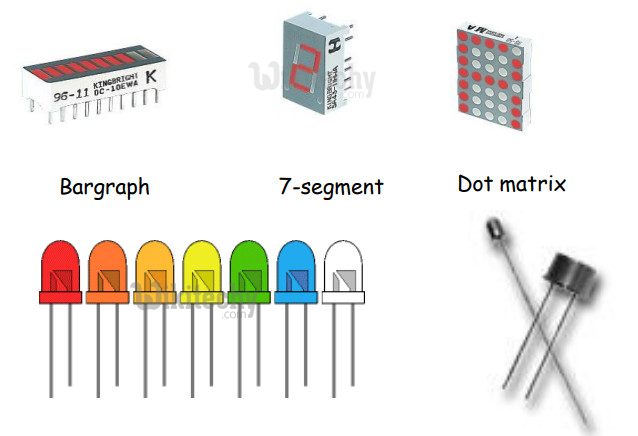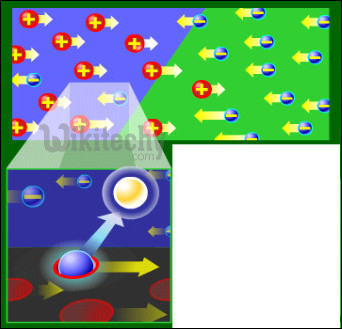555 Timer LED Flasher - What is LED ?
LED
- Light-emitting diode (LED) is a PN junction semiconductor device that emits a monochromatic (single color) light when operated in a forward biased direction.
- Light is produced within the solid semiconductor material.
- Light is generated when the particles that carry the current (known as electrons and holes) combine together within the semiconductor material.
- It is also defined as solid-state devices.
- LED convert electrical energy into light energy
- LEDs present many advantages over traditional light sources including
- Lower energy consumption.
- Longer lifetime.
- Improved Robustness.
- Smaller Size.
- Faster Switching.

LED
Types of Light Emitting Diode
- Gallium Arsenide (GaAs) – infra-red
- Gallium Arsenide Phosphide (GaAsP) – red to infra-red, orange
- Aluminium Gallium Arsenide Phosphide (AlGaAsP) – high-brightness red, orange-red, orange, and yellow
- Gallium Phosphide (GaP) – red, yellow and green
- Aluminium Gallium Phosphide (AlGaP) – green
- Gallium Nitride (GaN) – green, emerald green
- Gallium Indium Nitride (GaInN) – near ultraviolet, bluish-green and blue
- Silicon Carbide (SiC) – blue as a substrate
- Zinc Selenide (ZnSe) – blue
- Aluminium Gallium Nitride (AlGaN) – ultraviolet

Types of LED
How it Works

How LED Works
- When current flows across a diode.
- Negative electrons move one way and positive holes move the other way.
- The holes exist at a lower energy level than the free electrons.
- Therefore when a free electrons falls it losses energy.
- This energy is emitted in a form of a photon, which causes light.
- The color of the light is determined by the fall of the electron and hence energy level of the photon.
